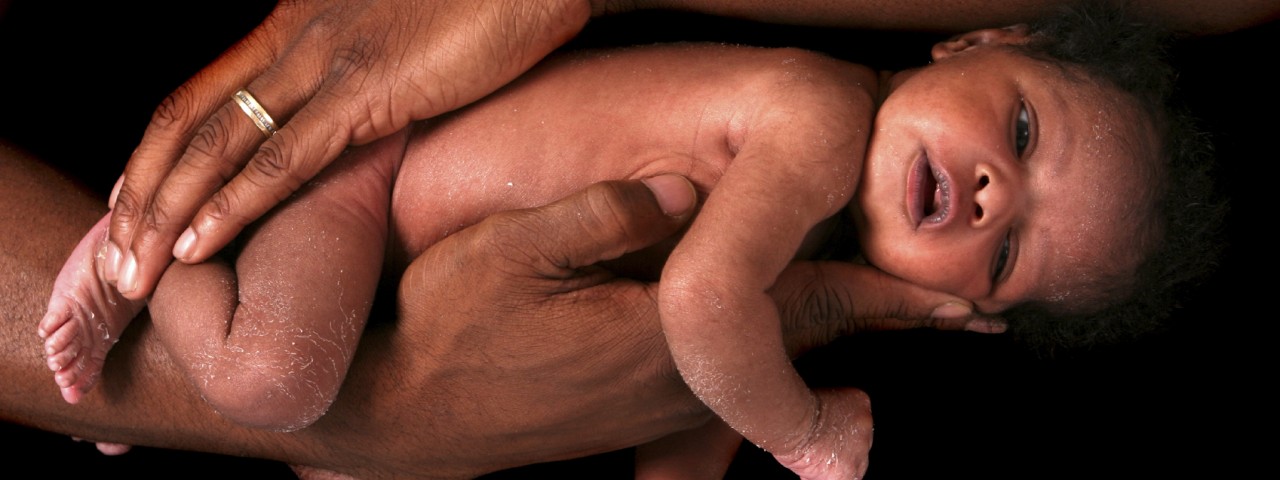Healthy Brain Development Begins with Trust
- Tweet

If we were publishing a visual dictionary, we know what we would put beside the word, "trusting." It would be the picture of a young child.
Nothing is more important to infants and toddlers than relationships with nurturing, loving people, both inside and outside the family. In fact, that is how they define the world and what it has to offer.
These young children embody trust in the people around them, and the interaction with others offers what nothing else in the world can give them: experiences that shape their self-awareness, validate their personalities, teach them to manage their own behavior, and shape their personalities, particularly empathy and self-control.
In essence, young children see the world as a web of relationships that touches every aspect of their development, whether it is physical, emotional, social, or behavioral. Most of all, these positive relationships are key to healthy and optimal brain development. Secure early relationships contribute mightily to children's understanding of who they are, how they fit in, what they can become, and how important they are.
It is the importance of these relationships that forms the science behind our Touch, Talk, Read, Play program. It responds directly to the way that young children reach out to us for interactions that help them understand the world and give them confidence about their place in it. This is the science that underlies the seemingly simple activities of TTRP, and yet, in doing them well, we have the greatest gift that we are given as humans: the opportunity to touch the future by setting these children's lives on a positive trajectory from their earliest years.
Sadly, the opposite is too often true. Early experiences with abuse and neglect can alter the architecture of the developing brain, becoming a barrier to full development of the neural pathways that pave the way for future learning. When a child exploring relationships in his world is greeted with abuse, neglect, and stress, he finds his world spinning out of orbit, and this in turn dramatically increases his likelihood for a negative trajectory in life. Young children who are victims of significant maltreatment can even exhibit an early childhood equivalent of post-traumatic stress disorder.
All of us who have reared and watched children know that while children are learning to express emotions and manage feelings, they are also developing the skills to walk, think, and speak. These physical changes often claim more attention than the emotional development that is going on at the same time, but it is the emotional foundation being laid in a child's first three years that will play a crucial role in her emotional health, well-being, her ability to learn in school, and her success in establishing positive relationships throughout life.
We are not saying that young children exposed to abuse and violence will necessarily grow up to be violent, abusive adults themselves. What we are saying is that these children are at much greater risks for adverse impacts on brain development and later problems with anger and aggression. The science of early brain development shows that about 40% of young children who experience abuse or neglect are developmentally delayed.
The reality that significant and continuing distress and abuse can affect the architecture of a young brain should be a wake-up call for everyone in our community to support policies and programs that address children's emotional and behavioral needs.
There's no better time than this month, which is Child Abuse Prevention Month.
There is no greater moral imperative for us than to protect children. It is also in our own enlightened self-interest, because of the costs of special education programs, foster care, criminal justice, drug abuse, and of continuing the cycle of abuse to the next generation. Early interventions can address the consequences of early childhood abuse and neglect, and because of it, we, as a community, as families, and as individuals, must be willing to act as partners in programs, plans, and policies to ensure the well-being of every child.
It begins with each of us asking a simple question for every idea, program, or policy involving children: does it have the potential to enhance a more promising developmental path for these young children? With that question firmly in the forefront of our decisions, we can develop the comprehensive and coordinated approach that can prevent abuse and violence against our children and provide effective, coordinated interventions to help those who need it most.
